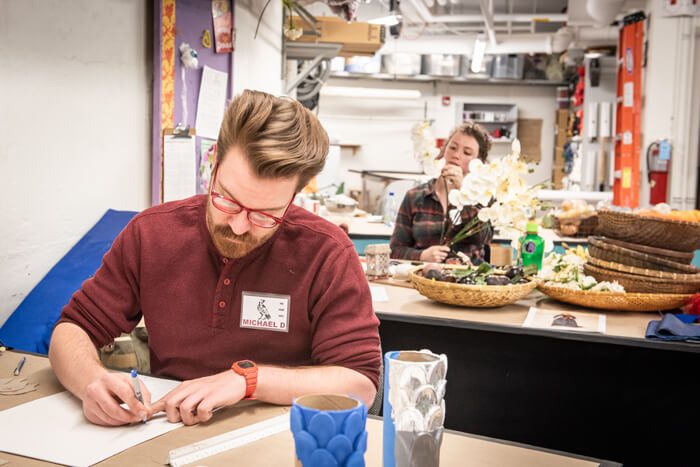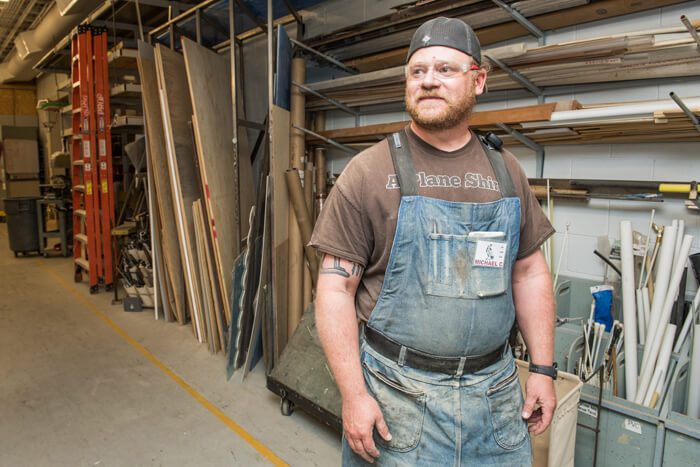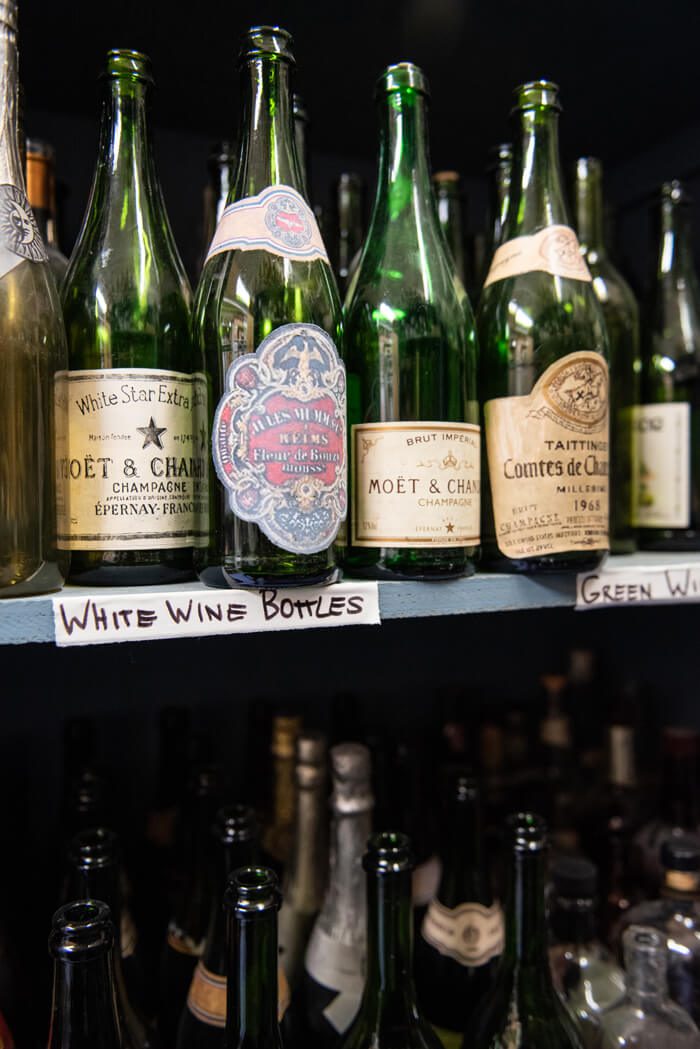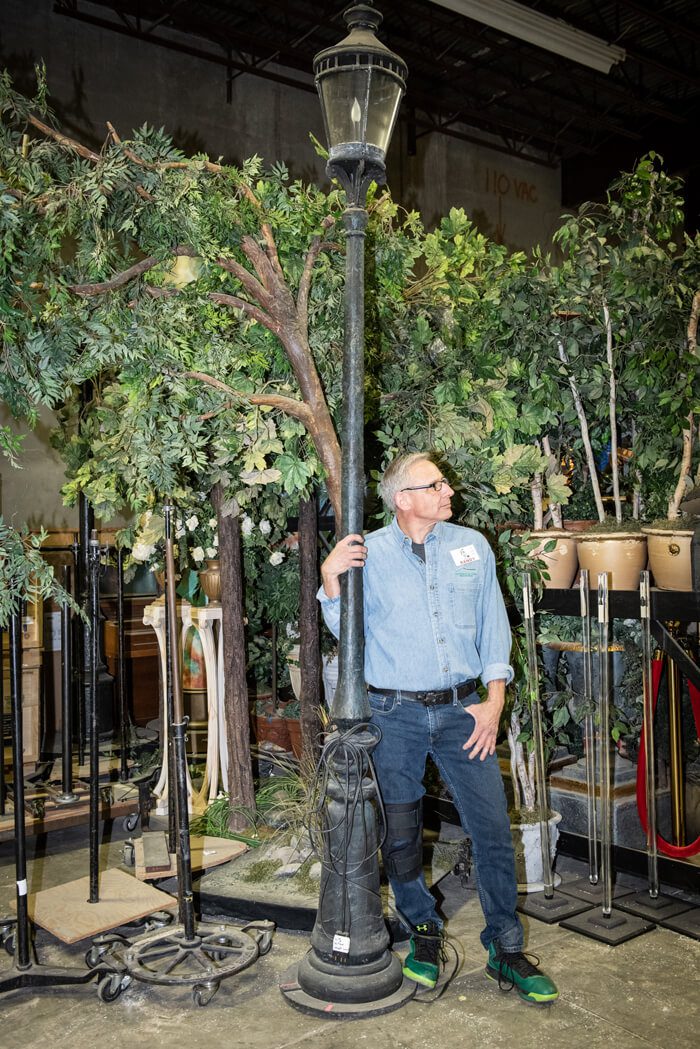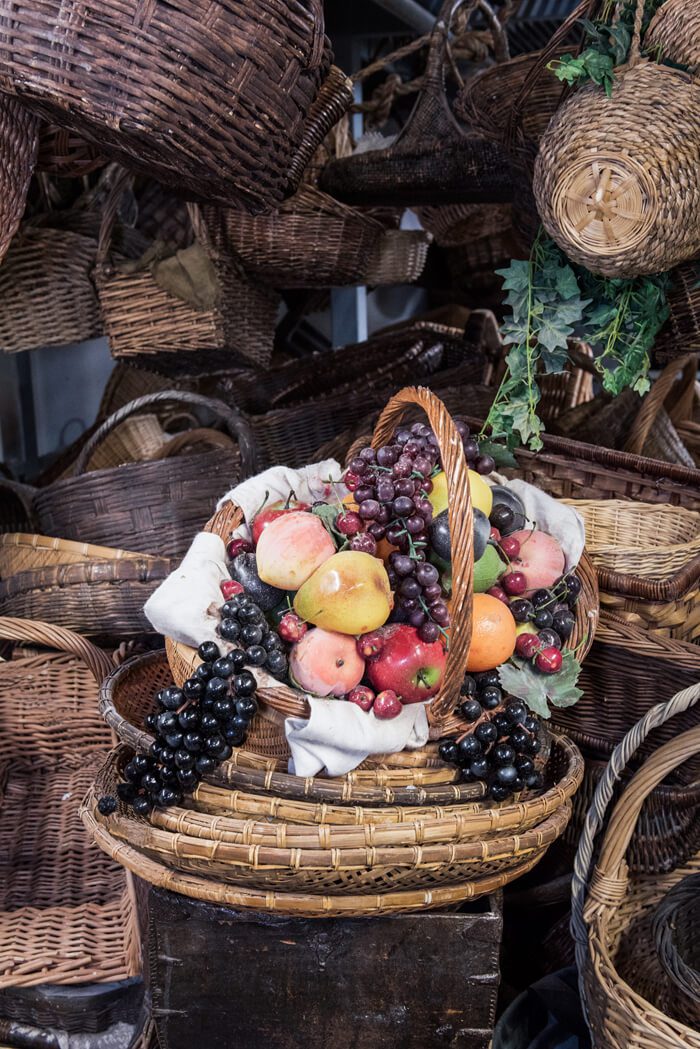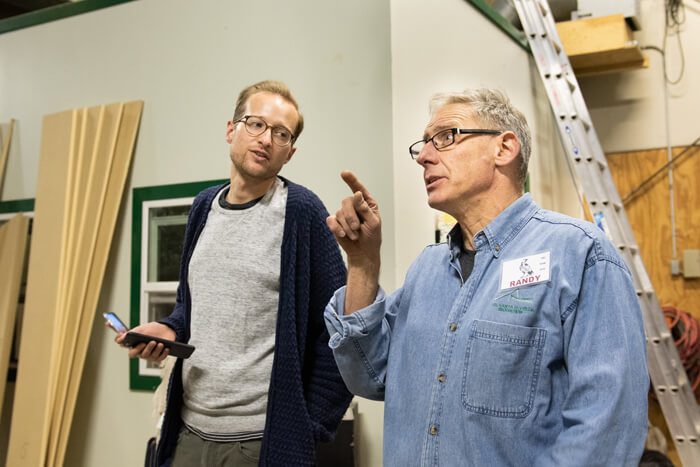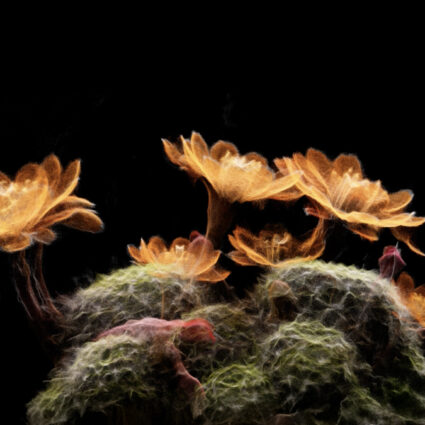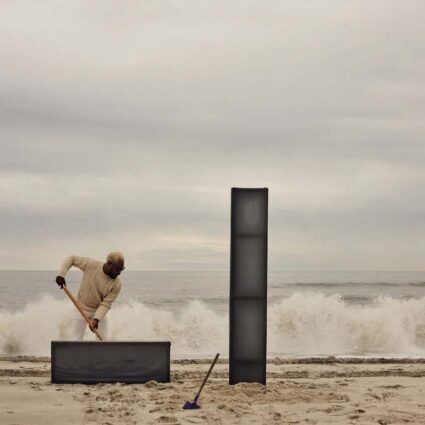
I. WEAPON
Where was the dagger? It was the final act of The Letter, a Santa Fe Opera world premiere that opened in 2009, and forty-mile-per-hour winds were howling across the venue’s open-air stage. The murderous Leslie, played by Patricia Racette, was singing her way towards suicide-by-stabbing. Suddenly, the wind whipped a tablecloth and sent Leslie’s fateful knife skittering down the dining table. This was despite the fact that the properties department had reinforced the linen with a stitch called a swing tack and secured it with a wind skirt.
“There were probably five minutes left in the opera,” says Randall Lutz, the Santa Fe Opera’s properties director. “All of the flowers had blown off the table and almost landed in the orchestra pit, which is a nightmare, and then the knife started rolling. Pat was downstage and couldn’t see what was happening.” A member of Lutz’s crew crawled behind the table and scooted the knife to its mark just in time for the tragic conclusion.
“There are five things in opera: a weapon, a letter, a piece of furniture, flowers, and a book,” says Lutz. “They’re in almost every opera. When the letter or document arrives, the plot starts moving.”
Props are plot points. If the knife slides away, so too does the thrust of an opera’s story. “There are five things in opera: a weapon, a letter, a piece of furniture, flowers, and a book,” says Lutz. “They’re in almost every opera. When the letter or document arrives, the plot starts moving.” The dagger is destined to be unsheathed, the flowers bestowed, the chair hurled in frustration, and the diary read—at least if they are still within reach.
The mobility of props makes them powerful narrative tools—but also quite complicated to manage. While a set is connected to the stage and a costume to the body of a performer, props are generally easier to displace. That is of particular concern when your stage has its own wind factor. Lutz has been an impeccable organizer of this ever-churning universe for the better part of his four decades working at the opera. A tour of his department begins at the root of the matter: the Santa Fe Opera’s vast lower levels. This is the shadowy archive of the properties team.
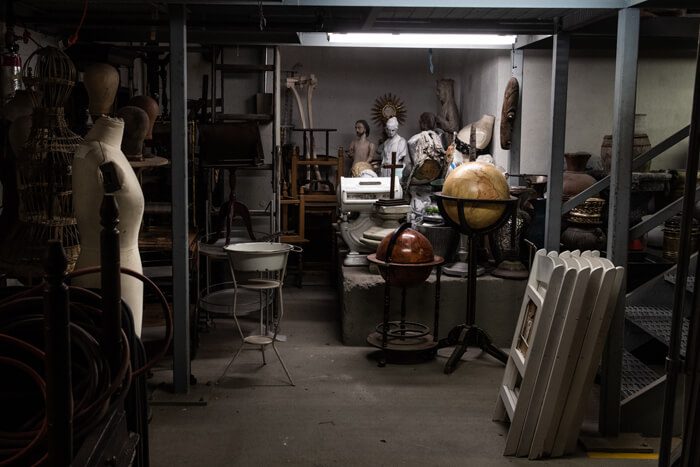
II. LETTER
“I got a reject letter before my first season,” says Lutz. “But I actually didn’t get the letter until after I got the phone call that they wanted to hire me. Someone else had left, so I was in.” That was in 1979, when Lutz was living in his native state of Pennsylvania. He started at the Santa Fe Opera as a scenic carpenter and would travel out to New Mexico each summer between other gigs. Three seasons in, he moved to Santa Fe permanently.
This year marks Lutz’s fortieth season, and he has occupied eight different roles in that time. He’s worked in housing and rentals and hustled props between storage and stage as a leader of the run crew. In 1993, he was promoted to properties director. “I like props the best because it uses the most disciplines,” Lutz says. “We work with fabric; we do effects; we build and upholster furniture; we build fake food. There are so many things.”
Lutz’s surroundings illustrate his point. He’s standing on the bottom level of a lofty basement space that holds a three-story gridded scaffold. Piles of objects are visible through the steel framework, lining every side of each level. Lutz ascends a narrow staircase and flits between the stacks, holding objects aloft.
“These are all the baskets, which we’ll use this year in La Bohème for the vendor booths in act two,” he says. “Here are cakes, champagne buckets, all sorts of fake food. These would actually be good for La Bohème as well.” There’s an open grave of fake dead animals (some of which were hunted in Cold Mountain), a heap of false snow (dispensed from a rolling drum during La Fanciulla del West), and an armory of non-firing weapons (the ones that do fire black powder are locked away upstairs).
This space is just the opera’s on-site storage, which exclusively houses props that are not currently part of a production. There are more props, including those that are inventoried for the opera to reuse, sell, or rent as part of specific shows, in a warehouse space a few miles north of the opera house. The props team uses both stockpiles as their palette, guided by a list of objects that is submitted by a show’s director and designer at least eighteen months before opening night.
After receiving this colorful inventory, which often references a specific setting and historical period, Lutz must examine his budget and decide whether to pull from his current pool of props, fabricate a new object, or try to find it elsewhere. “I would never get a real Biedermeier chair, because it would cost a fortune,” he says. “So do we build it or buy a replica?”
Often, the answer is dictated by the prominence of the prop. “If it’s something that the singer works with, it’s important to me that it looks good and makes them feel like they’re in that moment with the prop,” says Lutz. For a recent production of La Traviata, Lutz’s team made a letter from a soft fabric so that Violetta could comfortably tuck it in her bosom. “Then we hid identical letters everywhere on the set so that, if one letter blew away, she could pull another one from somewhere else,” Lutz says. “She has to read that letter in act three.”
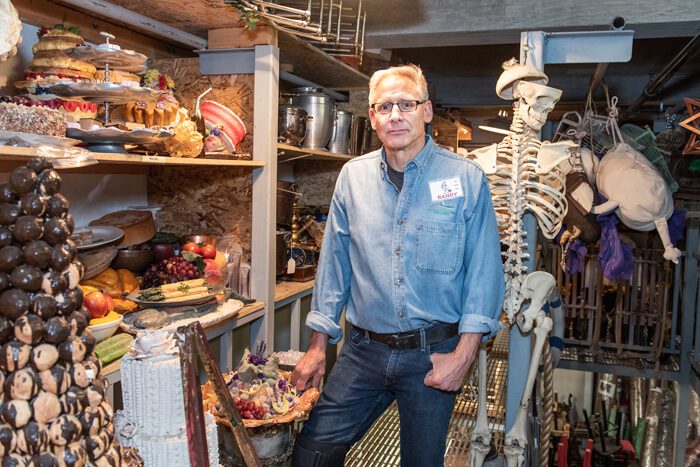
III. FURNITURE
Lutz lifts a chair and slams it on the concrete floor a few times. He’s making a racket, but it’s not as loud as the power drill that’s blaring from an unseen corner of the opera’s catacombs. When you’ve worked at the opera for this long, you have earned the right—or, rather, the responsibility—to bang your props around a bit.
“I don’t think this is stage worthy,” says Lutz, gently setting it aside. The meaning of that term shifts depending on the prop. In this case, the chair probably isn’t strong enough to withstand the grueling rehearsal process. “It’s amazing. It can be in someone’s house twenty-five years and never fall apart,” says Lutz. “You put it onstage for two rehearsals, and it falls apart.”
The props team receives stacks of notes each day of rehearsals. It’s a crash test for every prop that appears onstage, from topple-proof trees with weighted bases to chandeliers that are held aloft by rigid pipes so that they won’t swing too much in the wind. “When we get notes from the stage, sometimes they’re challenging, but in the end, we know that it’s going to help the singers do the best performance,” says Lutz.
Lutz’s team will need to reinforce the chair, buy a different one in a similar style, or build one like it in the carpentry shop upstairs. In special cases, they’ll conceal a steel armature within furniture props. “We did that last year for Madame Butterfly. She throws down a chair, but we didn’t know that was going to happen until they blocked it,” says Lutz. “We built it with steel but made it look like a Victorian chair. It didn’t break, but I think it cracked a little.”
Then there are the props that are only stage worthy if they do break. Lutz recalls an iconic scene near the end of The Tempest in which Prospero splits his staff. Rather than building multiple staffs for the different performances, Lutz’s team made a hollow, two-part steel rod with a wooden dowel running through its center. Each night of the performance, Prospero would break the prop and then the crew would reunite the steel parts using a new dowel, performing some kind of operatic Groundhog Day.
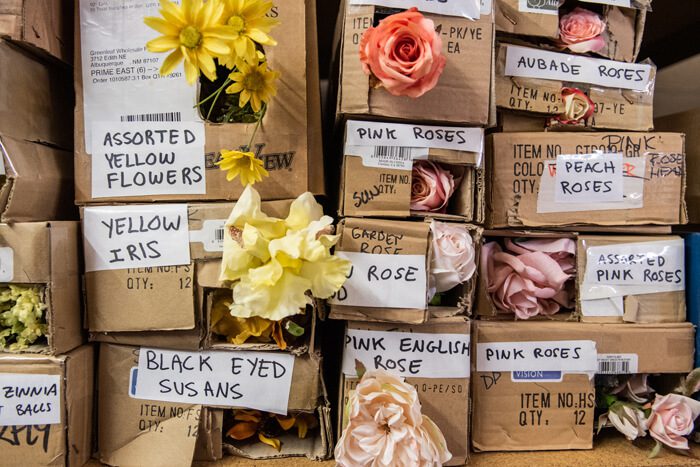
IV. FLOWERS
“This lift goes from the mezzanine to stage level, sometimes ten or twelve times in a single performance,” says Lutz. He’s one floor up from the basement, next to a service elevator that’s used by the run crew. That’s the team that organizes and transports props for each performance, another job that’s particularly complex during rehearsals.
“If they do act one of La Bohème, it has to leave the shop or its storage area and go into the hall,” says Lutz. “If it gets notes, they bring it back at the end of the day. They move stuff every day, sometimes five shows a day.” He declines to estimate how many objects that would involve, but it must run in the hundreds.
In the same room is another archive of hand props (things that actors carry onstage) and soft goods (props made from fabric) arranged on shelves in narrow aisles. As Lutz strides through them, odd labels scrawled on masking tape catch the eye. There’s an entire shelving unit of alcohol bottles (brown, green, corked, sake), a library of books and notebooks, heaps of dusty electronics (some of which appeared in the garage scene for Steve Jobs), and drippy candlesticks made from every material imaginable.
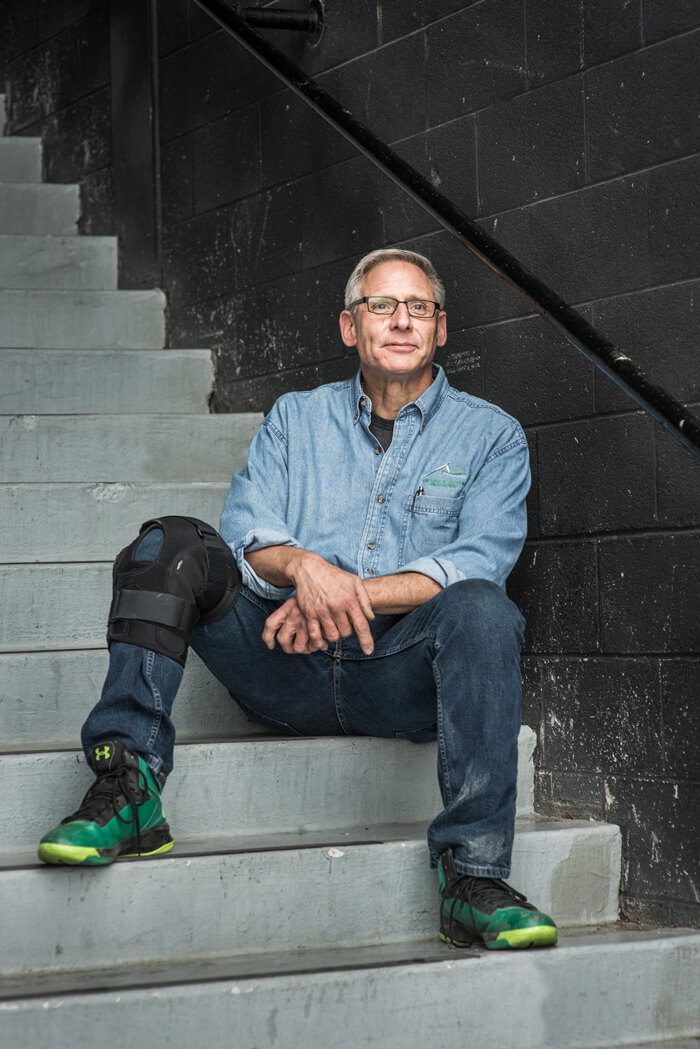
Up yet another staircase, Lutz finally arrives in the zone where new props are born. The department’s craft shop, dye shop, and carpentry shop are bustling with activity. One of Lutz’s craft artists is surrounded by marigold and orchid blooms that she’s arranging into garlands for Pearl Fishers. Another is producing scalloped petals that will ornament a series of lampposts for La Bohème. “The posts will be arranged in forced perspective towards the horizon line, so I have to make progressively smaller petals for each one so that they look right,” the artist explains.
When they’re not in the spotlight, props are the flora of the theater world. Their soil is the set, a platform that has plenty of space to theatrically evoke a place rather than detailing it. Props are the intricate blooms that add texture to these fantastical but often broadly drawn containers. Like plant life, they can be dense and voluminous, appearing as multiples but possessing subtle and endless variations. They should invite the audience to extrapolate a rich material universe beyond the confines of the stage.
The work that these artists are producing is dazzling, but it also must be structurally sound and perfectly functional. Next door in the carpentry shop, one of the lampposts is coming together. “The run crew will move this during the show. It does a little ballet,” says Lutz, sliding up a hidden panel in the prop’s base. “Because it moves, we couldn’t wire it, so it will hold a battery in here.”
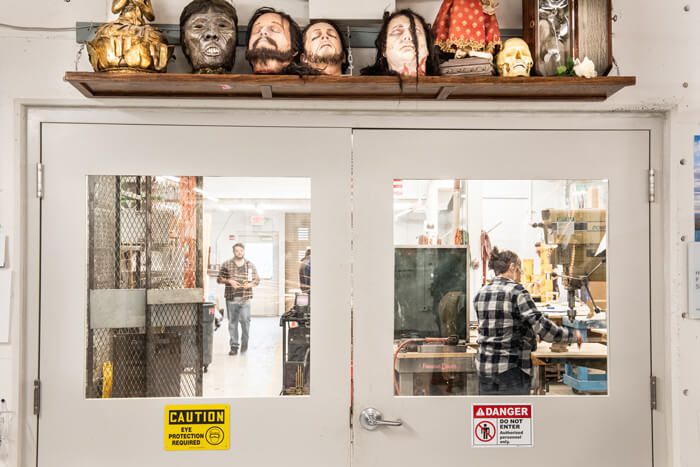
V. BOOK
Lutz’s journey ends in his office, a relatively quiet room adjoining the craft shop, with large windows opening to the action outside. There are mentorship awards haphazardly piled on a filing cabinet, but the real fruits of Lutz’s labor appear on a series of long shelves above his desk. These are the “bibles” for every Santa Fe Opera production since 1992, the year before Lutz became properties manager.
“These catalogue every prop we’ve ever used,” says Lutz, pulling one off of the shelf. “It has all of the measurements, what happened to it in the show, maintenance reports, whether it was used by a principal or not.” He flips open the binder, and the universe of the opera’s 2017 Steve Jobs production comes alive again. There are color swatches and fabric samples from the costumes, printouts of web pages from Etsy and Ebay where they purchased some of the props, sketches from the designer and notes from the director. “We could reproduce the entire show from this bible,” Lutz says.
The work the properties department carries out is remarkable and impeccable, but try to point that out and Lutz demurs. “After working in opera almost all of my life, what they do onstage is still what amazes me,” he says. “They’re singing, they’re watching the conductor, they’re acting, and they’re working the props.”
